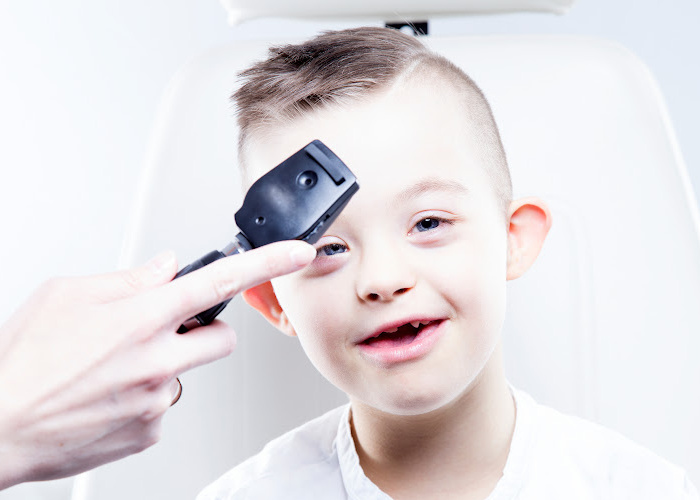It's crucial to know that students with autism and ADHD need special study strategies. Autism…

Exploring the Link Between EDS and Autism: What We Know So Far
Have you ever pondered the intricate web of our genetic makeup? The way it shapes us and determines our attributes is fascinating.
Among the myriad conditions that genetics influence, two stand out for their intriguing connection – Ehlers-Danlos syndrome (EDS), a group of hereditary connective tissue disorders, and Autism Spectrum Disorders (ASD).
This connection, though not widely known, has significant implications for understanding, diagnosing, and managing both conditions, as it highlights the link between EDS and autism.
Key Takeaways
- Research indicates a genetic link between Ehlers-Danlos Syndromes (EDS) and Autism Spectrum Disorder (ASD), including shared genetic markers and phenotypes, which suggests a potential overlap in the spectrum of these conditions.
- Immune system involvement has been noted in both EDS and ASD, pointing to immune dysregulation as a contributing factor to both chronic pain in EDS and behavioral traits in ASD, necessitating a deeper investigation into the role of immune system abnormalities.
- Comorbid conditions like mast cell activation syndrome, autonomic disorders, and psychiatric disorders frequently occur in individuals with both EDS and autism, complicating diagnosis and treatment, and highlighting the need for a multifaceted approach in managing these conditions.

Unraveling the Connection: EDS and Autism Spectrum Disorder
As one delves into the world of genetics, it becomes evident that many conditions are not standalone entities but rather interconnected pieces of a larger puzzle. One such captivating connection lies between Ehlers-Danlos Syndromes (EDS) and Autism Spectrum Disorder (ASD) – two complex conditions that, on the surface, might seem entirely unrelated. The common thread? Shared genetic markers, neurological phenotypes, and immune system involvement.
EDS, a group of hereditary connective tissue disorders, is characterized by symptoms such as skin hyperextensibility, atrophic scarring, and generalized joint hypermobility. On the other hand, autism spectrum disorder is a developmental disorder affecting communication and behavior. The overlap between the two might not be immediately apparent, but a closer look reveals a fascinating interplay between spectrum disorders, including autism spectrum disorder and hereditary connective tissue disorder.
Research illuminates that both EDS and ASD, being hereditary disorders, have shared genetic markers. These markers indicate a genetic overlap, potentially contributing to the linkage between the two conditions. However, genetics is just the tip of the iceberg. Shared neurological phenotypes, including neurobehavioral, psychiatric, and neurological commonalities, provide further evidence of this association.
Adding to the complexity, the immune system, our body’s defensive powerhouse, is significantly involved in the development of both EDS and ASD. Immune dysregulation, involving autonomic nervous system and immune system abnormalities common to both disorders, may contribute to chronic pain in EDS patients and behavioral traits in autism. For a profound understanding, we will examine the shared genetic markers, neurological phenotypes, and immune system involvement.

Shared Genetic Markers
The genetic link between EDS and autism is a topic of growing interest among researchers. Evidence indicates that specific genes are associated with both disorders, suggesting a possible correlation. There is an indication that EDS/HSD could be categorized as a subtype of autism due to shared genetic elements.
These shared genetic markers between Ehlers-Danlos syndromes (EDS) and Autism reveal a potential correlation between these conditions, including ehlers danlos syndrome. Both are intricately linked and are classified as complex spectrum conditions. The genetic overlap between EDS and autism emphasizes relatedness and shared genetic factors. For instance, genes involved in collagen production, crucial for connective tissue integrity, have been implicated, potentially impacting clinical approaches to both conditions, including hypermobility related disorders.
Neurological Phenotypes
Moving beyond genetics, one finds shared neurological phenotypes between EDS and autism. These include sensory processing issues and motor coordination difficulties. Sensory processing refers to how the nervous system receives messages from the senses and turns them into appropriate motor and behavioral responses.
Individuals with both EDS and autism may experience difficulties with proprioception, which is the perception of the body’s position in space. This can impact motor coordination, posture, and gross motor skills. Additionally, a maternal immune system may play a role in the development of autism spectrum disorder in the child.
Furthermore, individuals with autism, including autistic children, often confront difficulties with motor coordination and proprioceptive impairments, which result in movement and coordination challenges similar to those seen in developmental coordination disorder.
Immune System Involvement
Our body’s complex defense mechanism, the immune system, is instrumental in the development of both EDS and ASD. Immune dysregulation, which can lead to immune disorders, is believed to significantly impact the development of these conditions. The immune system serves as a crucial mediator of connective tissue synthesis in EDS, and there is evidence of a correlation between immune dysfunction and behavioral traits in autism.
Maternal immunomodulators and autoantibodies can potentially influence fetal brain development, increasing the risk of autism spectrum disorder in the child. This allows us to appreciate the extent of the immune system’s involvement in the link between EDS and autism.

The Impact of Joint Hypermobility on Autistic Individuals
Having examined the genetic, neurological, and immune links between EDS and autism, we shall now evaluate the effects of a key EDS symptom, joint hypermobility, on individuals with autism. Joint hypermobility, a defining feature of EDS, can lead to physical impairment challenges and mental health considerations in individuals with autism.
In the realm of physical impairments, autistic individuals with joint hypermobility may encounter difficulties with coordination and muscle tone. Occupational therapists (OTs) and physical therapists (PTs) often document signs of EDS in individuals with autism, such as lax joints or low muscle tone.
The impact of joint hypermobility extends beyond physical challenges. Mental and physical implications of joint hypermobility play a significant role in the stress and difficulties encountered by individuals with connective tissue disorders like EDS and hypermobility spectrum disorders, influencing their mental health and overall well-being.

Physical Impairment Challenges
When it comes to physical impairments, proprioceptive difficulties in individuals with EDS and autism can lead to ADHD-like symptoms and motor coordination issues. Proprioception, the sensory feedback from muscles, tendons, and skin that enables the perception of the body’s position in space, can be impacted in these individuals, affecting their motor coordination, posture, and gross motor skills.
Motor coordination challenges are particularly prevalent in individuals with autism and EDS. These difficulties range from general motor skills to more specific coordination issues, often linked to joint hypermobility and low muscle tone. Occupational therapy and physical therapy have been found beneficial in enhancing motor skills and daily functioning in these individuals.
Furthermore, joint hypermobility in EDS is linked to a higher occurrence of ADHD-like symptoms in autistic individuals, suggesting that the physical limitations resulting from joint hypermobility may impact attention and behavior in a manner similar to ADHD.
Mental Health Considerations
While physical impairments are a significant concern, the mental health challenges that autistic individuals with EDS face are equally critical. Anxiety and depression are notably prevalent among individuals with both conditions.
The physical symptoms of EDS can exacerbate these mental health challenges. Living with joint hypermobility, chronic pain, and other symptoms can lead to heightened anxiety and depression, affecting the individual’s mental health and overall quality of life. Early intervention and ongoing mental health support can help manage these challenges and ensure better mental health outcomes for these individuals.

Comorbid Conditions in EDS and Autism Spectrum
In the intricate interplay of EDS and autism, a noteworthy factor is the presence of co-existing or comorbid conditions. EDS and autism share several comorbid conditions, adding another layer of complexity to their link. These include:
- Mast cell activation
- Autonomic disorders
- Neurological disorders
- Psychiatric disorders
Mast cell activation syndrome (MCAS) is an immune disorder that may manifest simultaneously in both EDS and ASD. This can contribute to shared symptoms and conditions observed in these two disorders. Autonomic disorders, too, can manifest in both EDS and ASD, presenting as tachycardia, hypotension, and gastrointestinal disorders, among others, potentially impairing the individual’s quality of life.
Mast Cell Activation and Autonomic Disorders
Mast cell activation and autonomic disorders are prevalent in both EDS and autism. It is worth noting that up to 89% of individuals with hEDS or HSD could develop Mast Cell Activation Disorder (MCAD). This highlights the potential connection between these conditions.
In individuals on the autism spectrum, symptoms associated with mast cell activation are also frequently observed, leading to the conclusion that addressing these symptoms could enhance core autism symptoms. Symptoms commonly associated with MCADs include:
- Difficulties with mental clarity
- Acquiring new information
- Word-finding challenges
- Cognitive processing issues
- Challenges in regulating emotions
The Spectrum of Neurological and Psychiatric Disorders
Beyond mast cell activation and autonomic disorders, EDS and autism are also linked by a spectrum of neurological and psychiatric disorders. Seizure disorders, such as epilepsy, are particularly prevalent in individuals with EDS/HSD, especially in specific subtypes associated with specific genetic mutations like the FLNA gene.
In individuals with autism, the lifetime probability of developing epilepsy varies from 2.7% to 44.4%, highlighting the correlation between seizure disorders and both conditions. Additionally, individuals diagnosed with either autism or EDS/HSD may display psychiatric features including:
- anxiety
- depression
- bipolar disorder
- eating disorders
- suicidal behaviors

Navigating Diagnosis and Management
Due to the complex interaction between EDS and autism and the diverse factors leading to their overlap, the diagnosis and management of these conditions present considerable challenges. A multi-faceted approach is required, including:
- Physical examinations
- Genetic testing
- Therapy
- Supportive treatments
Diagnosis of EDS typically involves a physical examination using the Beighton Scoring System and genetic testing involving a blood test. The process for diagnosing Autism Spectrum Disorder typically involves initial screening to assess the necessity for additional evaluation, followed by a thorough diagnostic assessment that examines medical records, developmental background, present behaviors, and employs standardized assessments.
Approaches to Genetic Testing
In the quest for a definitive diagnosis, genetic testing plays a crucial role. The process of genetic testing for EDS entails a blood test, which is capable of diagnosing EDS Type I or Type II, although it must be noted that the genetic test can only identify approximately 50% of cases.
Genetic testing can also assist in risk assessment for EDS and autism by identifying common genetic variants that contribute to the risk of developing these conditions. Case studies have shown a relationship between individuals who have both autism and EDS.
Testing is available for all 13 types of EDS except for Hypermobile EDS (hEDS). However, it is not available for hEDS.
Occupational Therapy and Supportive Treatments
Beyond genetic testing, managing EDS and autism involves a range of therapeutic and supportive treatments. Occupational therapy, for instance, can prove beneficial in managing symptoms of EDS, including joint protection strategies, soft traction, and pressure techniques, along with manual fascia techniques.
Similarly, in individuals with autism, occupational therapy enhances developmental outcomes by:
- Developing play and learning strategies
- Enhancing self-care
- Sensory processing
- Fine motor skills
- Social interaction
- Fostering greater independence
For individuals with both EDS and autism, a combination of occupational and physical therapy, along with speech and language therapy, can improve motor skills, daily functioning, and address communication challenges.

Using Touchstone Essentials Pure Body Extra to Manage EDS and Autism Symptoms
Emerging studies and anecdotal reports indicate that detoxification methods like those provided by Touchstone Essentials Pure Body Extra can help manage these symptoms.
Pure Body Extra leverages the capabilities of activated hydrated zeolite to trap and remove toxins and heavy metals from the body. These substances are frequently linked to numerous health problems, including neurological and connective tissue disorders like Autism Spectrum Disorder and Ehlers-Danlos Syndrome.
By lessening the toxic load in a person’s body, Pure Body Extra could help ease some of the symptoms associated with EDS and autism. The product’s nanosized zeolite particles are small enough to penetrate cell membranes, offering a gentle yet effective detoxification process that is especially crucial for individuals with sensitive systems.
While there’s no universal solution for managing EDS and autism symptoms, Pure Body Extra, along with other therapeutic interventions, can play a vital role in a holistic approach to helping these individuals realize their full potential.

The Significance of Early Detection
When managing EDS and autism, the role of early detection proves to be crucial. The early detection of EDS in individuals with Autism Spectrum Disorder enables early intervention, which is acknowledged to provide the following benefits:
- Provides the best opportunity for children to develop to their maximum potential
- Allows for timely access to appropriate support and services
- Helps in understanding and managing the unique challenges faced by individuals with both EDS and autism
Early diagnosis of EDS and Autism Spectrum Disorder can result in psychological benefits, such as early access to interventions for anxiety, depression, and other psychiatric features. Also, physical and lifestyle benefits, including the availability of treatments specific to EDS conditions, are notable.
The early detection of autism spectrum disorders significantly influences treatment strategies and patient outcomes for those diagnosed with Autism Spectrum Disorder. It facilitates early intervention, which enhances developmental outcomes and prognosis. Conversely, a delayed diagnosis can heighten parental stress and postpone these crucial early interventions.

Research Directions and Future Perspectives
Despite unraveling the intricate connection between EDS and autism, the necessity for further research remains clear. Prospective areas of research for examining the correlation between EDS and autism include:
- Further exploration of the overlap between the two conditions
- Conducting larger-scale studies to establish the prevalence and characteristics of co-occurring EDS and autism
- Investigating the underlying mechanisms and genetic factors that contribute to the association
As we look to the future, technology is set to play a pivotal role in progressing the diagnosis of EDS and autism. Innovative methods such as:
- the diagnostic entity called generalized hypermobility spectrum disorder (G-HSD)
- technology-based approaches like machine learning, fMRI, and EEG
- the use of computational markers
have the potential to improve assessment and diagnostic capabilities through the application of digital technologies.
Potential new treatment approaches for EDS and autism encompass the exploration of supportive therapies and interventions, the adoption of a multidisciplinary approach, as well as experimental options such as enzyme therapy and gene therapy.

Summary
In conclusion, the exploration of the link between EDS and autism brings to light the intricate interplay of genetics, neurology, and the immune system. The shared genetic markers, neurological phenotypes, and immune system involvement underscore the complex connection between these two conditions.
Recognizing the impact of joint hypermobility on autistic individuals, understanding the comorbid conditions, and navigating the challenging landscape of diagnosis and management are crucial in effectively managing both EDS and autism. As we look to the future, further research and technology hold promise for improving our understanding and approach to these conditions.
FAQs
What connective tissue disorder is associated with autism?
It seems that there is a higher incidence of Ehlers-Danlos Syndrome (EDS) in autistic individuals, suggesting a potential connection between the two conditions. EDS is considered uncommon, occurring in less than 1% of the population.
Is there a link between hypermobile and autism?
Yes, there is a high association between hypermobile Ehlers-Danlos Syndrome and autism. Neurodivergent adults are more likely to experience joint hypermobility and pain compared to the general population.
What is the life expectancy of someone with EDS?
The life expectancy of someone with vascular EDS is around 48 years, while those with kyphoscoliotic EDS may also have a reduced lifespan due to certain health factors. Both types of EDS may lead to a decreased life expectancy.
What are the comorbid conditions in EDS and autism?
Both EDS and autism have comorbid conditions such as mast cell activation, autonomic disorders, and a range of neurological and psychiatric disorders. These conditions may coexist and impact individuals with both EDS and autism.
Why is early detection of EDS and autism important?
Early detection of EDS and autism is crucial because it allows for effective management and intervention, leading to better outcomes for affected individuals.



This Post Has 0 Comments